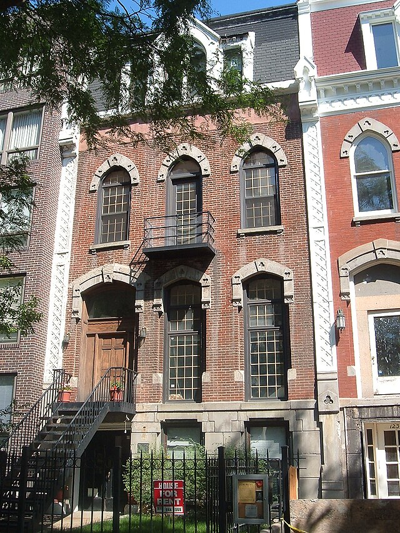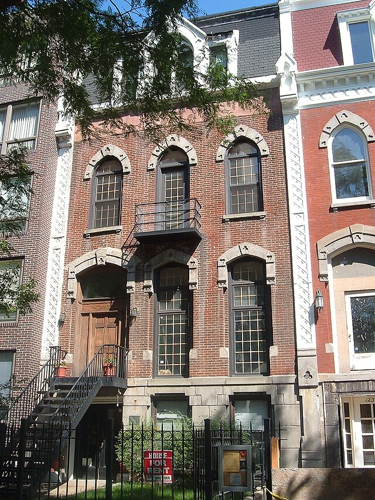Long before he became the master of the modern novel, Ernest Hemingway’s Chicago roots played a key role in his evolution as an influential and greatly admired author. He began crafting the writing that would make him famous when he lived at 1239 N. Dearborn St. This apartment building was home to the man who would one day write some of the most influential novels in American literary history.
After their honeymoon, Hemingway and his bride, Hadley, spent the first three months of their marriage in an unassuming top-floor apartment in a Dearborn Street brownstone. In her book ”Paris Without End,” Gioia Diliberto recounts how, in a letter to his friend and fellow writer F. Scott Fitzgerald, Hemingway described his modest and affordable living situation. He wrote, "I’m living in a very nice little place here, a brownstone apartment, a former boarding house, no lease, 75 dollars a month."
While it may not have been the lavish home he would later have, it provided Hemingway with a space to focus on his writing, setting the stage for his first paid writing job. He earned $52 a week writing advertisements for The Cooperative Commonwealth. Although it was a necessary but uninspiring job that allowed him to support himself, the position provided him with valuable experience. The concise, impactful writing skills he gained from his position would later influence his distinctive style.
Looking for new adventures and inspiration, Hemingway signed on as a foreign correspondent for the Toronto Star. With Hadley’s distaste for their Chicago apartment and city life, the couple eventually moved to Paris. There, Hemingway’s literary career began to take off, marking the development of the famous writer we know today.
Since hosting future literary royalty, the neighborhood and building have undergone several dramatic transformations. In the late nineteenth and early twentieth centuries, the neighborhood began to attract more affluent families with its convenient proximity to downtown and the lakefront. The neighborhood became known as the Gold Coast, which remains one of the most desirable areas in Chicago, renowned for its upscale homes and wealthy residents.
Today, the home features a tri-level design with seven bedrooms and six and a half bathrooms. Three decks offering breathtaking views of the neighborhood, a patio, and a coach house are just a fraction of this home's amenities.
The house no longer shows any traces of Hemingway’s time there, except for a plaque out front. Framed magazine covers are displayed along a hallway on the ground floor, showcasing the future literary icon's rise to fame. These subtle reminders offer a glimpse into the early days of a man who would change the literary world.
With an asking price of approximately $2 million, this home offers more than just historical significance; it comes with bragging rights. Owning a piece of Hemingway's early life is a rare opportunity.








(0) comments
Welcome to the discussion.
Log In
Keep it Clean. Please avoid obscene, vulgar, lewd, racist or sexually-oriented language.
PLEASE TURN OFF YOUR CAPS LOCK.
Don't Threaten. Threats of harming another person will not be tolerated.
Be Truthful. Don't knowingly lie about anyone or anything.
Be Nice. No racism, sexism or any sort of -ism that is degrading to another person.
Be Proactive. Use the 'Report' link on each comment to let us know of abusive posts.
Share with Us. We'd love to hear eyewitness accounts, the history behind an article.